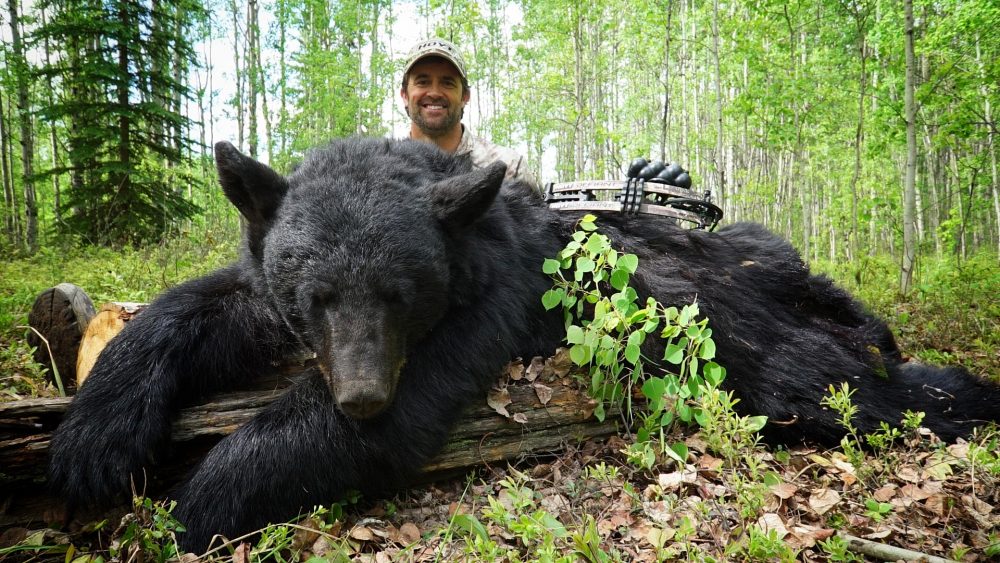Black bear hunting is a thrilling and challenging pursuit that attracts hunters from all corners of the United States and beyond. With their wide distribution across North America, black bears present a unique opportunity for hunters to engage with nature and test their skills. Whether you’re an experienced hunter or a newcomer to bear hunting, understanding the best opportunities and effective strategies is key to a successful hunt.
In this guide, we will delve into black bear hunting opportunities, tips for success, and essential tactics to help you make the most of your hunt.
Where to Hunt Black Bears in the U.S.
Black bears are found across a variety of habitats in North America, from the dense forests of the Northeast to the rugged mountains of the West. While black bear populations are widespread, certain regions are known for offering exceptional hunting opportunities.
- Northeast (Maine, New York, Vermont, and New Hampshire)
The Northeast offers some of the most reliable black bear hunting opportunities in the U.S. States like Maine are famous for their high black bear populations, with both spring and fall hunting seasons. Hunters here will find a mix of dense forest and swampy terrain ideal for bear activity. - Great Lakes Region (Michigan, Wisconsin, Minnesota)
The Great Lakes region boasts a significant black bear population, particularly in northern Michigan and Wisconsin. The mix of wooded areas, marshes, and remote terrain offers prime bear habitat. Michigan’s Upper Peninsula is particularly well-known for its bear hunts, with a balance of trophy-sized and mid-sized bears. - Southeast (Florida, North Carolina, Alabama)
While not as widespread as in the northern U.S., the Southeast also provides opportunities for black bear hunting, particularly in the swamps and forests of Florida and parts of the Appalachian foothills. North Carolina and Alabama host both public and private land hunts. - Western States (Montana, Wyoming, Idaho, and California)
Western states like Montana and Wyoming offer vast wilderness areas that are home to black bears, particularly in areas with dense forests and high elevation. California’s dense national forests and wilderness areas also offer a great hunting experience, though bear populations are more limited compared to other regions. - Alaska
Although better known for grizzly bear hunts, Alaska also has a healthy population of black bears. The wilderness of Alaska presents unique challenges due to the state’s remoteness and difficult terrain, but it also offers some of the most scenic and wild hunting environments in the world.
Hunting Seasons and Regulations
Black bear hunting seasons vary by state, but most areas offer two seasons: spring and fall. Both seasons provide distinct opportunities and challenges.
- Spring Bear Hunting
Spring bear hunting typically begins in April or May, depending on the region. Spring hunts are often productive because bears are emerging from hibernation and are focused on feeding to regain lost body weight. Bears are typically more active during daylight hours, making it a prime time for spot-and-stalk hunting or using bait stations. - Fall Bear Hunting
Fall hunting begins in late summer or early fall and extends into early winter. During this time, bears are preparing for hibernation, and their primary focus is feeding to accumulate fat reserves. This makes fall an excellent time for hunting, as bears are actively foraging and are more predictable in their movements.
Each state has specific regulations governing bear hunting, including hunting methods, the use of bait, tagging, and bag limits. It’s crucial to check the regulations for your target state before heading out to ensure compliance and avoid penalties.
Effective Black Bear Hunting Tips
- Know Bear Behavior and Habits
Understanding bear behavior is essential for a successful hunt. Bears are primarily nocturnal, but during spring and fall, they can be active during the day as well. They tend to frequent areas with abundant food sources, such as berries, nuts, and acorns, and are often found near water sources, such as streams or lakes, for drinking.- Spring: Bears come out of hibernation hungry and are looking for easy meals. They often frequent areas with dense vegetation, new growth, and berry patches.
- Fall: Bears are focused on fattening up for winter, making acorns, nuts, and berry bushes critical food sources. Look for signs of their feeding behavior in these areas.
- Scouting and Trail Cameras
Scouting is essential before any black bear hunt. Use trail cameras to monitor bear activity in areas where you plan to hunt. Look for signs such as tracks, scat, and claw marks on trees. Trail cameras can provide insight into bear movement patterns and allow you to find the best locations for setting up tree stands or bait stations. - Use Bait Stations
Baiting is a legal and effective method in many states. Using the right bait—such as sweet treats, grains, or meat—can attract black bears to your hunting location. Set up a bait station away from your hunting stand to ensure the bear doesn’t notice you right away. It’s best to establish baiting sites well in advance of the hunt and refresh the bait regularly to maintain bear interest. - Spot-and-Stalk Techniques
Spot-and-stalk hunting is a method that requires patience, precision, and a sharp eye. Black bears are adept at hiding in thick foliage, so it’s important to be quiet and observant when searching for them. Use binoculars to scan for movement or bears feeding in open areas, and move slowly to close the distance when the opportunity arises. - Tree Stands and Ground Blinds
When hunting from a stand, select a tree that provides an unobstructed view of the surrounding area. Set up your stand at a height that allows you to get a good shot while remaining hidden from the bear. Ground blinds are also an effective option, especially in areas with heavy vegetation. These provide concealment while giving you the chance to observe bear behavior up close. - Proper Gear and Equipment
Having the right gear can make all the difference in a successful black bear hunt. Be sure to bring:- A reliable rifle or bow: Black bears are large animals, and the right weapon is essential for a quick, humane kill. Consult with local experts for recommendations based on the area and bear size.
- A good knife: You’ll need a quality knife for field dressing and skinning.
- Bear spray: Always carry bear spray in case of an unexpected encounter.
- Appropriate clothing: Choose gear suited for the conditions of the hunt, whether it’s cold, wet, or hot.
- Safety First
Black bear hunting can be dangerous, especially if you encounter a bear at close range. Always keep your distance and be aware of your surroundings. If you’re hunting in areas with dense bear populations, be sure to practice proper safety measures such as using bear-proof food storage and staying alert when navigating through bear country.
Ethical Considerations and Conservation
Bear hunting can contribute to wildlife management, but ethical considerations should always be a top priority. It’s important to ensure that you only take shots that you are confident will result in a clean kill. Avoid shooting at moving or distant animals if you’re not sure you can make an accurate shot.
Additionally, bear populations in many regions are carefully monitored. Be sure to follow all hunting regulations and guidelines to ensure you’re contributing to the conservation of bear species. By hunting responsibly, you help ensure that future generations can enjoy this exciting sport.
Conclusion
Black bear hunting is a challenging and rewarding pursuit that requires knowledge, skill, and preparation. By understanding the best hunting locations, learning bear behavior, and using effective strategies, you can increase your chances of a successful hunt. Always remember to prioritize safety, conservation, and ethics, and enjoy the thrill of one of North America’s most iconic hunts. Happy hunting!


